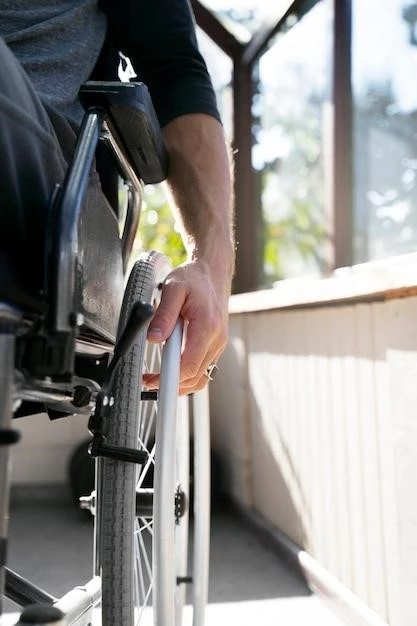Introduction to Spastic Paraplegia Type 4, Dominant
Spastic paraplegia type 4 (SPG4, OMIM 182601) is the most common form of hereditary spastic paraplegia (HSP), caused by heterozygous mutations in the SPAST gene. HSPs affect about 1.8/100,000 of the population and autosomal dominant HSPs comprise a significant proportion.
Spastic paraplegia type 4 (SPG4) is the most common form of hereditary spastic paraplegia, with a prevalence of about 1.8/100,000 individuals. It is inherited in an autosomal dominant manner and is characterized by progressive gait impairment, muscle weakness, and spasticity in the lower limbs.
Overview of the Disease
Spastic paraplegia type 4 (SPG4) is the most common form of hereditary spastic paraplegia, with a prevalence of about 1.8/100,000 individuals. It is inherited in an autosomal dominant manner and is characterized by progressive gait impairment, muscle weakness, and spasticity in the lower limbs.
Autosomal Dominant Inheritance
Spastic paraplegia type 4 (SPG4) is an autosomal dominant form of hereditary spastic paraplegia, caused by mutations in the SPAST gene. These mutations disrupt spastin production, leading to spasticity and weakness in the lower limbs.
SPAST Gene Mutations
Spastic paraplegia type 4 (SPG4) is characterized by mutations in the SPAST gene٫ leading to the production of abnormal spastin protein. These mutations disrupt microtubule-severing functions٫ resulting in progressive gait impairment٫ muscle weakness٫ and spasticity in affected individuals.
Clinical Presentation and Symptoms
Spastic paraplegia type 4 (SPG4) presents with progressive gait impairment, muscle weakness, and lower-limb spasticity in affected individuals.
Progressive Gait Impairment
Individuals with spastic paraplegia type 4 (SPG4) commonly experience a progressive decline in gait function٫ characterized by increasing difficulties in walking due to lower-limb spasticity and weakness.
Muscle Weakness and Spasticity
Individuals with spastic paraplegia type 4 (SPG4) commonly experience muscle weakness and spasticity in the lower limbs٫ leading to progressive difficulty in movement and coordination.

Diagnosis and Molecular Testing
Diagnosis of spastic paraplegia type 4 (SPG4) involves genetic testing to identify mutations in the SPAST gene, particularly through whole genome sequencing to confirm the presence of SPG4.
Whole Genome Sequencing
Whole genome sequencing is utilized in the diagnosis of spastic paraplegia type 4 (SPG4) to identify mutations in the SPAST gene, confirming the presence of this autosomal dominant condition with progressive lower-limb spasticity and weakness.
Identification of SPG4 (SPAST-HSP)
Spastic paraplegia type 4 (SPG4), also known as SPAST-HSP, is primarily diagnosed through the identification of mutations in the SPAST gene. These mutations lead to the characteristic progressive gait impairment and lower-limb spasticity seen in affected individuals.
Disease Management and Treatment Approaches
Management of spastic paraplegia type 4 (SPG4) involves symptomatic treatments to address muscle weakness, spasticity, and physical therapy to improve mobility and quality of life for affected individuals.
Symptomatic Treatment Strategies
Symptomatic treatment approaches for spastic paraplegia type 4 (SPG4) focus on managing muscle weakness and spasticity in the lower limbs to improve mobility and overall quality of life for affected individuals.
Physical Therapy and Rehabilitation
Physical therapy and rehabilitation play crucial roles in the management of spastic paraplegia type 4 (SPG4), aiming to enhance muscle strength, improve mobility, and maximize functional independence for individuals with this condition.

Prognosis and Disease Progression
Spastic paraplegia type 4 (SPG4) typically presents with an adult onset, characterized by progressive bilateral lower-limb gait spasticity and weakness, leading to variable degrees of functional impairment over time.
Age of Onset and Disease Severity
Spastic paraplegia type 4 (SPG4) typically manifests in adults with an onset ranging from the 3rd to 5th decade of life, characterized by progressive gait impairment due to bilateral lower-limb spasticity and weakness, leading to variable degrees of functional impairment over time.
Research Advances and Current Studies
Recent studies focus on defining the clinical spectrum and molecular features of SPG4, leading to improved genotype-phenotype correlations and potential therapeutic targets for individuals affected by this autosomal dominant form of hereditary spastic paraplegia (HSP).
Genotype-Phenotype Correlations
Recent research has focused on understanding genotype-phenotype correlations in autosomal dominant spastic paraplegia type 4 (SPG4), aiming to elucidate the relationships between specific SPAST gene mutations and the clinical manifestations observed in affected individuals, leading to improved diagnosis and personalized treatment approaches.
Neuroinflammation in SPG11
Research on neuroinflammation in SPG11 aims to understand the immune system’s role as a disease amplifier in Spastic Paraplegia Type 11٫ providing insights for potential therapeutic interventions and disease management strategies in affected individuals.
Support Resources for Patients and Families
For individuals and families affected by spastic paraplegia type 4 (SPG4)٫ organizations such as Genetic Alliance٫ The Lilly Blair Foundation٫ and the National Organization for Rare Disorders (NORD) offer crucial support and information on managing the condition.
Genetic Alliance and National Organization for Rare Disorders (NORD)
Organizations like Genetic Alliance and the National Organization for Rare Disorders (NORD) provide vital support and resources for individuals and families affected by spastic paraplegia type 4 (SPG4), offering information, guidance, and community connections to navigate and cope with the challenges presented by this condition.
The Lilly Blair Foundation
The Lilly Blair Foundation provides valuable assistance to individuals and families impacted by spastic paraplegia type 4 (SPG4) by offering support, resources, and guidance to navigate the challenges associated with this autosomal dominant condition, ensuring access to relevant information and community connections for better disease management.
Epidemiology and Prevalence Data
Spastic paraplegia type 4 (SPG4) is a common form of autosomal dominant hereditary spastic paraplegia (HSP) affecting a significant percentage of individuals, with a variable age of onset and clinical presentation.
Incidence of Spastic Paraplegia Type 4
Spastic Paraplegia Type 4 (SPG4) is the most common subtype of autosomal dominant hereditary spastic paraplegia٫ accounting for more than 25% of all HSP cases and 40-60% of all autosomal dominant HSP cases٫ with a broad clinical and genetic heterogeneity reported in affected individuals.
Common Forms of Hereditary Spastic Paraplegia
Spastic paraplegia type 4 (SPG4) is the most common form of autosomal dominant hereditary spastic paraplegia (HSP)٫ but there are other subtypes caused by mutations in different genes٫ including TFG٫ leading to various neurological disorders٫ encompassing autosomal recessive hereditary spastic paraplegia (HSP)٫ autosomal dominant hereditary motor and sensory neuropathy with proximal dominant involvement (HMSN-P)٫ and autosomal dominant types of Charcot-Marie-Tooth disease type 2.
Conclusion and Future Directions
As the most common form of autosomal dominant hereditary spastic paraplegia, SPG4 presents a diverse clinical spectrum with various genetic and clinical features. Moving forward, continued research aims to enhance genotype-phenotype correlations, advance understanding of disease mechanisms, and identify potential therapeutic interventions to improve management and outcomes for individuals affected by this condition.
